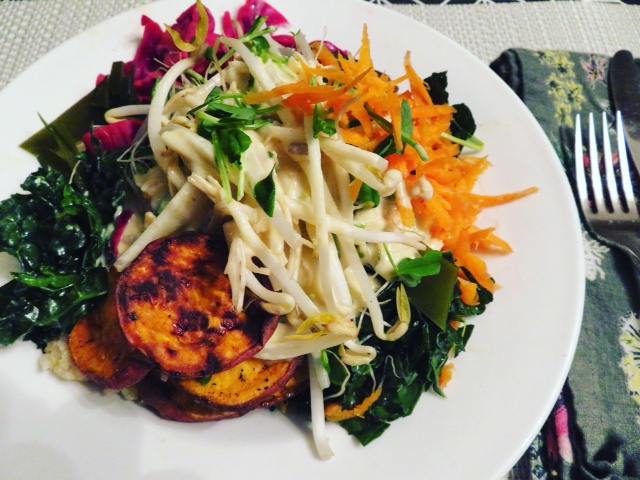In recent years, plant-based cooking has gained immense popularity, not just as a dietary preference but as a lifestyle choice. Whether you’re a seasoned vegan, someone looking to reduce meat consumption, or simply curious about the benefits of plant-based foods, this guide will walk you through everything you need to know about cooking delicious, nutritious meals without animal products. From pantry essentials to easy recipes, let’s dive into the world of plant-based cooking.
Why Go Plant-Based?
Before we delve into the culinary details, let’s explore why so many people are adopting plant-based diets.
- Health Benefits: Plant-based diets are rich in vitamins, minerals, fiber, and antioxidants. Studies have shown that eating a diet high in fruits, vegetables, legumes, and whole grains can reduce the risk of chronic diseases like heart disease, diabetes, and certain cancers.
- Environmental Impact: Reducing meat and dairy consumption can significantly lower your carbon footprint. Animal agriculture is a major contributor to greenhouse gas emissions, deforestation, and water use.
- Ethical Considerations: Many people choose plant-based diets due to concerns about animal welfare. By opting for plant-based meals, you can avoid contributing to industries that rely on animal exploitation.
- Cost-Effective: Believe it or not, plant-based cooking can be more affordable than a meat-heavy diet. Staples like beans, rice, and vegetables are typically less expensive than meat and dairy products.
Now that we know the “why,” let’s move on to the “how.”
Pantry Essentials for Plant-Based Cooking
Stocking your pantry with the right ingredients is the first step to making plant-based cooking easier and more enjoyable. Here’s a list of must-have ingredients:
- Whole Grains: Brown rice, quinoa, oats, farro, and barley are excellent sources of fiber and essential nutrients. They’re versatile and can be used in salads, bowls, or as side dishes.
- Legumes: Beans (black beans, chickpeas, kidney beans, etc.), lentils, and peas are protein powerhouses. Canned varieties are convenient, but cooking them from dry is more economical and often results in better texture.
- Nuts and Seeds: Almonds, walnuts, chia seeds, flaxseeds, and hemp seeds add healthy fats and a satisfying crunch to dishes. They’re great for making homemade nut butters, adding to salads, or blending into smoothies.
- Plant-Based Milks: Almond, soy, oat, and coconut milk are commonly available dairy alternatives. Choose unsweetened versions to keep your recipes versatile.
- Vegetable Broth: A good vegetable broth is essential for soups, stews, and sauces. You can buy pre-made broths or make your own by simmering vegetable scraps.
- Tofu and Tempeh: These soy-based proteins are staples in plant-based diets. Tofu is extremely versatile—it can be scrambled, grilled, or blended into creamy sauces. Tempeh has a nuttier flavor and firmer texture, making it great for stir-fries or sandwiches.
- Nutritional Yeast: This cheesy-tasting ingredient is a favorite among vegans. It’s often used to add a savory, umami flavor to dishes and is an excellent source of B vitamins.
- Spices and Herbs: Fresh and dried herbs and spices are key to creating flavorful plant-based meals. Keep a well-stocked spice rack with essentials like cumin, turmeric, garlic powder, smoked paprika, and basil.
- Plant-Based Proteins: In addition to tofu and tempeh, products like seitan (made from wheat gluten), jackfruit, and meat substitutes like Beyond Meat or Impossible Burger can provide variety and texture to your meals.
Key Techniques in Plant-Based Cooking
Plant-based cooking is all about creativity and maximizing the flavors of natural ingredients. Here are some essential techniques to master:
- Roasting: Roasting vegetables brings out their natural sweetness and enhances their flavor. Root vegetables like carrots, sweet potatoes, and beets, as well as cruciferous vegetables like cauliflower and broccoli, roast beautifully.
- Sautéing and Stir-Frying: Quick, high-heat cooking methods like sautéing and stir-frying are great for locking in the nutrients and flavors of vegetables. Use olive oil or sesame oil for added flavor.
- Blending: Invest in a good blender or food processor for making smoothies, soups, and sauces. Blended vegetables like cauliflower or cashews can be transformed into creamy sauces without the need for dairy.
- Batch Cooking: Plant-based meals lend themselves well to batch cooking. Prepare large quantities of grains, beans, and roasted vegetables at the beginning of the week, and mix and match them for easy meals throughout the week. NosBoss Whip Cream Chargers Delivery can be a handy option for those looking to add a little flair to plant-based desserts or drinks with whipped coconut or cashew cream, adding a light, airy texture with ease.
- Marinating: Many plant-based proteins, like tofu and tempeh, benefit from being marinated before cooking. A simple marinade of soy sauce, olive oil, garlic, and lemon juice can transform the flavor of these ingredients.
- Fermenting and Pickling: Fermented foods like kimchi, sauerkraut, and miso add depth of flavor and beneficial probiotics to your meals. Pickling is a simple way to preserve vegetables and add a tangy twist to salads or sandwiches.

Easy Plant-Based Recipes to Get You Started
Now that you’ve got the basics down, here are three simple and delicious plant-based recipes to try at home:
1. Chickpea Salad Sandwich
Ingredients:
- 1 can of chickpeas, drained and rinsed
- 2 tablespoons vegan mayo
- 1 tablespoon Dijon mustard
- 1 tablespoon lemon juice
- Salt and pepper to taste
- 1 celery stalk, chopped
- 1 green onion, chopped
- Whole grain bread or wraps
Instructions:
- Mash the chickpeas with a fork or potato masher until mostly smooth.
- Mix in the vegan mayo, mustard, lemon juice, salt, and pepper.
- Stir in the chopped celery and green onion.
- Serve on whole grain bread or in a wrap with lettuce and tomato.
2. Lentil and Vegetable Stir-Fry
Ingredients:
- 1 cup cooked lentils
- 1 bell pepper, sliced
- 1 zucchini, sliced
- 1 carrot, julienned
- 2 tablespoons soy sauce
- 1 tablespoon sesame oil
- 1 tablespoon rice vinegar
- 1 clove garlic, minced
- 1 teaspoon grated ginger
- Cooked brown rice or quinoa
Instructions:
- Heat the sesame oil in a pan over medium heat.
- Add the garlic and ginger, and sauté for 1 minute.
- Add the vegetables and stir-fry for 5-7 minutes until tender-crisp.
- Stir in the cooked lentils, soy sauce, and rice vinegar.
- Serve over brown rice or quinoa.
3. Creamy Cashew Alfredo Pasta
Ingredients:
- 1 cup raw cashews, soaked in water for at least 4 hours
- 1/2 cup water
- 2 tablespoons nutritional yeast
- 1 clove garlic, minced
- Salt and pepper to taste
- 12 oz whole wheat pasta
- 1 tablespoon olive oil
- Fresh parsley, chopped (optional)
Instructions:
- Blend the soaked cashews, water, nutritional yeast, garlic, salt, and pepper until smooth and creamy.
- Cook the pasta according to package instructions.
- Drain the pasta and toss with olive oil and the cashew sauce.
- Garnish with fresh parsley if desired.
Tips for Success in Plant-Based Cooking
- Plan Ahead: Meal planning is crucial for success in plant-based cooking. Make a weekly plan, prepare your ingredients in advance, and experiment with different recipes to avoid mealtime stress.
- Experiment with Flavors: Don’t be afraid to experiment with spices, herbs, and sauces. Plant-based meals rely on bold flavors, so have fun with different combinations to find what you love.
- Focus on Nutrient Density: Ensure you’re getting enough protein, healthy fats, and essential nutrients by incorporating a wide variety of plant-based foods into your diet.
- Stay Inspired: Follow plant-based food blogs, watch cooking videos, and join online communities to stay motivated and discover new recipes.
Plant-based cooking is not only a healthy and sustainable choice but also an exciting culinary adventure. With a well-stocked pantry, a few basic techniques, and a dash of creativity, you’ll be whipping up delicious, nutritious plant-based meals in no time. Whether you’re fully vegan or just looking to incorporate more plants into your diet, this guide will set you on the path to success. Happy cooking!










